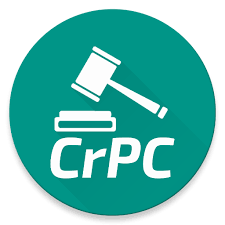Understanding Trademarks: Safeguarding Identity in Business Law
In the dynamic landscape of commerce, where brands are the lifeblood of
business, the concept of trademarks stands as a formidable pillar. More than
just a visual emblem or a catchy phrase, a trademark serves as the
quintessential representation of a company's identity. It's the face that
customers recognize and trust, a symbol that sets a brand apart in the bustling
marketplace.
Trademarks, often seen as unchanging symbols, possess a dynamic nature that facilitates their evolution and adaptation over time. Beyond their initial creation, these marks undergo subtle or significant transformations to align with evolving brand strategies, design trends, and consumer preferences. The metamorphosis of trademarks involves intricate alterations in design elements, colour schemes, typography, or presentation styles, ensuring their resonance with contemporary audiences while preserving their fundamental identity.
Furthermore, trademarks possess an innate capacity for expansion beyond their original scope. What begins as a symbol representing a specific product or service can transcend its initial boundaries, finding relevance and application in unforeseen territories. This ability to extend the reach and significance of a trademark underscores its versatility and enduring impact within the ever-evolving landscape of business and consumer culture.
A trademark epitomizes a brand's distinct identity, an emblematic symbol of trust and recognition. It encapsulates a company's ethos, fostering consumer loyalty through its unique visual or textual representation. Beyond mere insignia, it safeguards the authenticity and quality of products or services, standing as a beacon in a crowded marketplace.
This distinctive mark serves as a promise of consistency and reliability, forging an indelible connection between businesses and their consumers. In essence, a trademark embodies the soul of a brand, anchoring its presence, and echoing its values across industries and time.
Types of Trademarks: Trademarks come in various forms, each with its unique appeal and function:
The Trademark Registration Journey
While the use of a mark in commerce offers some level of protection, registering a trademark with relevant authorities provides enhanced legal rights and broader protection.
The process involves several key stages:
Safeguarding Trademarks: Infringement and Protection
Trademark infringement occurs when another party uses a mark that's identical or confusingly similar to a registered trademark, potentially causing consumer confusion or dilution of the original mark's distinctiveness.
To safeguard their trademarks, owners can pursue legal action against infringers, seeking remedies like injunctions, damages, or the infringing party's profits. Proactive monitoring and enforcement of trademarks are vital to maintaining their integrity and exclusivity.
One fascinating aspect that's not always immediately evident about trademarks is their evolution and adaptation over time. Trademarks, often perceived as static symbols or words, can undergo transformations, updates, or even expansions to reflect the changing dynamics of a brand or its market presence.
For instance, some iconic trademarks that seem timeless have actually undergone subtle or significant alterations since their inception. These changes could be in their design elements, color schemes, or overall presentation, allowing them to stay relevant in contemporary times while retaining their core identity.
Moreover, trademarks can extend beyond their original intended use. A trademark initially associated with a specific product or service might find new applications or extensions, allowing the brand to diversify while leveraging the existing trust and recognition associated with the mark.
This adaptability and evolution of trademarks highlight their dynamic nature, showcasing how these symbols continually evolve to resonate with consumers and maintain their relevance in an ever-changing business landscape.
Global Reach: International Trademarks
In an interconnected global marketplace, businesses often seek trademark protection beyond their home territories. International trademark registration systems like the Madrid Protocol offer streamlined processes for obtaining protection in multiple countries through a single application, facilitating global brand expansion.
Continued Vigilance: Trademark Renewal and Maintenance
Trademark rights are not perpetual. Regular renewal and active usage are essential to sustain these rights. Owners must adhere to renewal deadlines and consistently use the mark in commerce to prevent vulnerability to cancellation due to non-use.
Conclusion
In conclusion, trademarks are the cornerstone of brand identity and consumer trust in the business realm. They encapsulate a company's essence, fostering recognition and loyalty among consumers. Understanding their significance, navigating the registration process meticulously, and actively safeguarding trademarks are pivotal steps for businesses to preserve their identities and stay competitive in a crowded marketplace.
References:
Trademarks, often seen as unchanging symbols, possess a dynamic nature that facilitates their evolution and adaptation over time. Beyond their initial creation, these marks undergo subtle or significant transformations to align with evolving brand strategies, design trends, and consumer preferences. The metamorphosis of trademarks involves intricate alterations in design elements, colour schemes, typography, or presentation styles, ensuring their resonance with contemporary audiences while preserving their fundamental identity.
Furthermore, trademarks possess an innate capacity for expansion beyond their original scope. What begins as a symbol representing a specific product or service can transcend its initial boundaries, finding relevance and application in unforeseen territories. This ability to extend the reach and significance of a trademark underscores its versatility and enduring impact within the ever-evolving landscape of business and consumer culture.
The Essence of Trademarks
At its core, a trademark embodies a unique identifier. It could be a logo, a word, a phrase, a symbol, or a combination thereof. Essentially, it's anything that sets apart the goods or services of one entity from another. Think of iconic logos like the golden arches of McDonald's or the interlocking rings of Audi; these symbols transcend mere visuals�they signify an entire brand identity.A trademark epitomizes a brand's distinct identity, an emblematic symbol of trust and recognition. It encapsulates a company's ethos, fostering consumer loyalty through its unique visual or textual representation. Beyond mere insignia, it safeguards the authenticity and quality of products or services, standing as a beacon in a crowded marketplace.
This distinctive mark serves as a promise of consistency and reliability, forging an indelible connection between businesses and their consumers. In essence, a trademark embodies the soul of a brand, anchoring its presence, and echoing its values across industries and time.
Significance of Trademarks
The value of trademarks lies in their multifaceted impact on businesses:-
Brand Distinction: In a sea of competitors, trademarks serve as beacons guiding consumers towards familiar and trusted products or services. They create a distinct identity, making a brand easily recognizable.
-
Consumer Confidence: Trust and loyalty are built upon consistent quality and reliability. A robust trademark not only distinguishes a brand but also assures consumers of its authenticity and consistency.
- Business Asset: Trademarks are more than symbols; they hold substantial value. They can significantly contribute to a company's overall worth and market position. Often, they are considered among the most valuable assets of a business.
Types of Trademarks: Trademarks come in various forms, each with its unique appeal and function:
- Word Marks: Purely textual representations like "Apple" or "McDonald's."
- Design Marks: Logos, symbols, or stylized representations like the Nike swoosh or the Mercedes-Benz star.
- Combination Marks: A blend of words and designs, such as the Starbucks logo with both the mermaid symbol and the company name.
- Slogans and Taglines: Short, memorable phrases like Nike's "Just Do It" or McDonald's "I'm Lovin' It."
The Trademark Registration Journey
While the use of a mark in commerce offers some level of protection, registering a trademark with relevant authorities provides enhanced legal rights and broader protection.
The process involves several key stages:
- Trademark Search: A thorough exploration to ensure the proposed mark is distinctive and not already in use by another entity, preventing potential infringement issues.
- Filing the Application: Submission of detailed information about the mark and its intended use to the appropriate intellectual property office.
- Examination: Scrutiny by the trademark office to verify compliance with legal prerequisites, distinctiveness, and possible conflicts with existing trademarks.
- Publication and Opposition: Public listing of the mark to allow third parties to oppose if they claim a conflict with their own marks.
- Registration: Upon successful completion and absence of opposition, official registration is granted, conferring exclusive rights to the mark's use concerning specified goods or services.
Safeguarding Trademarks: Infringement and Protection
Trademark infringement occurs when another party uses a mark that's identical or confusingly similar to a registered trademark, potentially causing consumer confusion or dilution of the original mark's distinctiveness.
To safeguard their trademarks, owners can pursue legal action against infringers, seeking remedies like injunctions, damages, or the infringing party's profits. Proactive monitoring and enforcement of trademarks are vital to maintaining their integrity and exclusivity.
One fascinating aspect that's not always immediately evident about trademarks is their evolution and adaptation over time. Trademarks, often perceived as static symbols or words, can undergo transformations, updates, or even expansions to reflect the changing dynamics of a brand or its market presence.
For instance, some iconic trademarks that seem timeless have actually undergone subtle or significant alterations since their inception. These changes could be in their design elements, color schemes, or overall presentation, allowing them to stay relevant in contemporary times while retaining their core identity.
Moreover, trademarks can extend beyond their original intended use. A trademark initially associated with a specific product or service might find new applications or extensions, allowing the brand to diversify while leveraging the existing trust and recognition associated with the mark.
This adaptability and evolution of trademarks highlight their dynamic nature, showcasing how these symbols continually evolve to resonate with consumers and maintain their relevance in an ever-changing business landscape.
Global Reach: International Trademarks
In an interconnected global marketplace, businesses often seek trademark protection beyond their home territories. International trademark registration systems like the Madrid Protocol offer streamlined processes for obtaining protection in multiple countries through a single application, facilitating global brand expansion.
Continued Vigilance: Trademark Renewal and Maintenance
Trademark rights are not perpetual. Regular renewal and active usage are essential to sustain these rights. Owners must adhere to renewal deadlines and consistently use the mark in commerce to prevent vulnerability to cancellation due to non-use.
Conclusion
In conclusion, trademarks are the cornerstone of brand identity and consumer trust in the business realm. They encapsulate a company's essence, fostering recognition and loyalty among consumers. Understanding their significance, navigating the registration process meticulously, and actively safeguarding trademarks are pivotal steps for businesses to preserve their identities and stay competitive in a crowded marketplace.
References:
- European Union Intellectual Property Office (EUIPO) - https://euipo.europa.eu/
- World Intellectual Property Organization (WIPO) - Trademarks - https://www.wipo.int/trademarks/en/
- LexisNexis - https://www.lexisnexis.com/
- "Gilson on Trademarks" by Anne Gilson LaLonde and Jerome Gilson
Law Article in India
Legal Question & Answers
Lawyers in India - Search By City
LawArticles
How To File For Mutual Divorce In Delhi

How To File For Mutual Divorce In Delhi Mutual Consent Divorce is the Simplest Way to Obtain a D...
Increased Age For Girls Marriage

It is hoped that the Prohibition of Child Marriage (Amendment) Bill, 2021, which intends to inc...
Facade of Social Media

One may very easily get absorbed in the lives of others as one scrolls through a Facebook news ...
Section 482 CrPc - Quashing Of FIR: Guid...

The Inherent power under Section 482 in The Code Of Criminal Procedure, 1973 (37th Chapter of t...
The Uniform Civil Code (UCC) in India: A...

The Uniform Civil Code (UCC) is a concept that proposes the unification of personal laws across...
Role Of Artificial Intelligence In Legal...

Artificial intelligence (AI) is revolutionizing various sectors of the economy, and the legal i...








Please Drop Your Comments